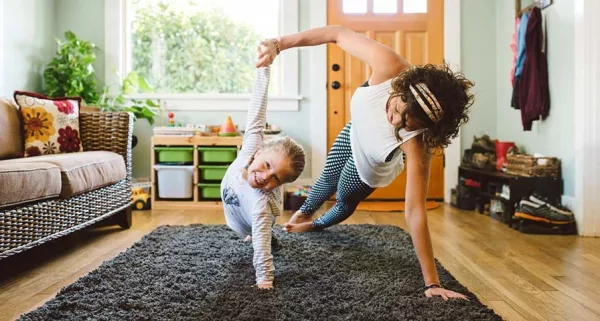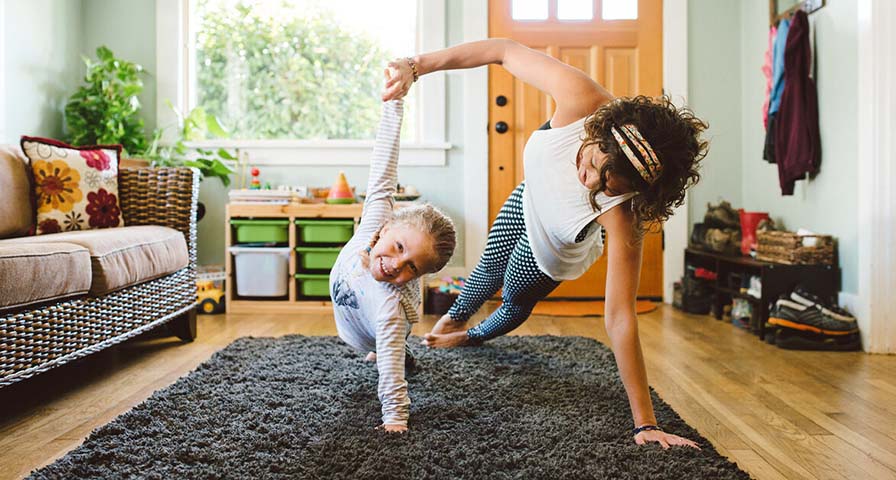Originally published July 12, 2022 in Healthline.
By Tony Hicks
It took a great deal of collective effort to shut down everyday life for children when COVID-19 first struck in early 2020.
And now, more than two years later, it may take just as much effort to return children to pre-pandemic levels of physical activity.
 A new study by researchers from University College Dublin, Ireland, looked at more than 1,000 data sources detailing changes in child and adolescent behavior during pandemic lockdowns.
A new study by researchers from University College Dublin, Ireland, looked at more than 1,000 data sources detailing changes in child and adolescent behavior during pandemic lockdowns.
The study, published by JAMA Pediatrics, concludes that “a considerable reduction in physical activity has occurred.”
“Unfortunately, newly established levels of physical inactivity will be difficult to change,” the study authors wrote. “The gradual lifting of public health restrictions will likely be insufficient to facilitate increases in child and adolescent physical activity.”
“Thus, targeted public health initiatives are urgently needed. As UNICEF recognized in the early stages of the pandemic, formal reactivation strategies are required to avert the potentially irreversible harms that are being caused to a lost generation of youth,” they added.
The effects of the layoff
Dr. Tracy Zaslow is a pediatric sports medicine specialist at Cedars-Sinai/Kerlan-Jobe Institute in Los Angeles and a team physician for Angel City Football Club (NWSL) and LA Galaxy.
Zaslow told Healthline when children started returning to sports in March 2021, the inactivity showed in how easily they were getting injured.
“I saw a large increase in visits for acute injuries like fractures and sprains as well as overuse injuries as kids dove in headfirst to intense training schedules,” she said. “Sports seasons from fall 2020, winter and spring 2021 were all compressed into a few short weeks in spring where kids went from no/minimal activity to hours a day of intense training and back-to-back games.”
Zaslow said the pandemic not only shut down activities, but it also helped change bodies that were already changing anyway.
“Many kids were less active and also sustained normal growth of height and weight, and some added excess pounds due to consuming more food and being more sedentary,” she said. “When they returned to sports one to two years later, many demonstrated signs of being deconditioned. Additionally, they needed increased strength to move their now larger bodies that were starting from a weaker place than before March 2020, but due to the prolonged period of inactivity.”
“These weaknesses can lead to poor movement patterns (biomechanics) that lead to injuries,” Zaslow added. “For example, a sedentary child who has gained 30 pounds and then tries to do a three-mile run may end up with knee pain and ankle sprains due to poor landings patterns where the muscles are not yet strong enough to hold the lower extremities in the proper position.”
Returning to daily exercise
Dr. Leah Alexander, a pediatrician for Medical Doctors Associates at Pediatricare Associates of New Jersey as well as a consultant for parenting blog Mom Loves Best, told Healthline that the effects on children who don’t play sports also need to be considered.
“School physical education programs should be re-evaluated,” Alexander said. “This is particularly important for youth who are not interested in organized sports. Even before the pandemic, many children were only offered one gym class per week, which is not enough exercise. High schools seem to do a bit better with this, often offering daily gym classes or access to a weight room.”
“However, some schools replace physical education with health, driver’s education, or other non-academic classes during some semesters,” she added. “A recent study also showed that preschool children lack sufficient physical activity due to facility constraints or lack of staff participation. Because children spend a significant amount of their day in school, providing more opportunities for physical activity there is ideal.”
What parents learned
Dr. Ilan Shapiro, the chief health correspondent and medical affairs officer for AltaMed Health Services in Los Angeles, told Healthline parents learned a lot about what kids need during the pandemic.
“After one year of having kids at home with us, many parents realized the importance of what school provides for kids beyond just traditional education, such as socialization and emotional wellbeing,” Shapiro said. “Families learned how being together could lead to more encouragement, how to improve learning and navigate virtual learning.”
“As parents, we are learning how to better serve our kids and family members to support issues like weight management and healing the mental health scars of the pandemic,” he said. “Families can incorporate fun activities together to build healthy habits like hiking and dancing to make exercise a fun experience. These activities also create an opportunity for families to bond and have quality time together.”
Shapiro said parents need to take a good look at their children’s post-pandemic medical condition.
“If there’s any medical issue, such as a change in behavior or excessive weight gain, it should be addressed by a child’s physician to see if it can be improved with a medical intervention,” he said. “We need to find pathways for recovery for our youth.
“The other part is mental health. We need to understand how we can relate to our kids, eat healthy, and be physically active with them. Kids understand more so by our actions than our words,” Shapiro said.
“If parents are aligned with healthy habits such as eating well-balanced diets, avoiding sugary drinks and not consuming fast food, then this will genuinely encourage building healthy lifestyles among kids,” he added.
Dr. Daniel Ganjian, a pediatrician at Providence Saint John’s Health Center in California, told Healthline a good approach for parents is to convert children’s screen time to exercise time.
“Before the pandemic, parents used to give their children unlimited access to the internet and electronic devices,” Ganjian said. “Now I find that almost all of my patients put programs on their devices and routers to monitor the screen time and viewing content. People are more aware of digital safety.”
“Be a good example,” Ganjian added. “Do not use screens when you are in front of your children. Otherwise, you send an implicit message that the screen is more important than your child. Get active and start exercising. In the evenings, exercise by going walking/biking/roller skating/swimming together.
“Family activities allow for better family dynamics in addition to the health benefits of exercising,” he added.
Make the IHT ZONE heart rate monitor part of your School's Student Wellness Program




